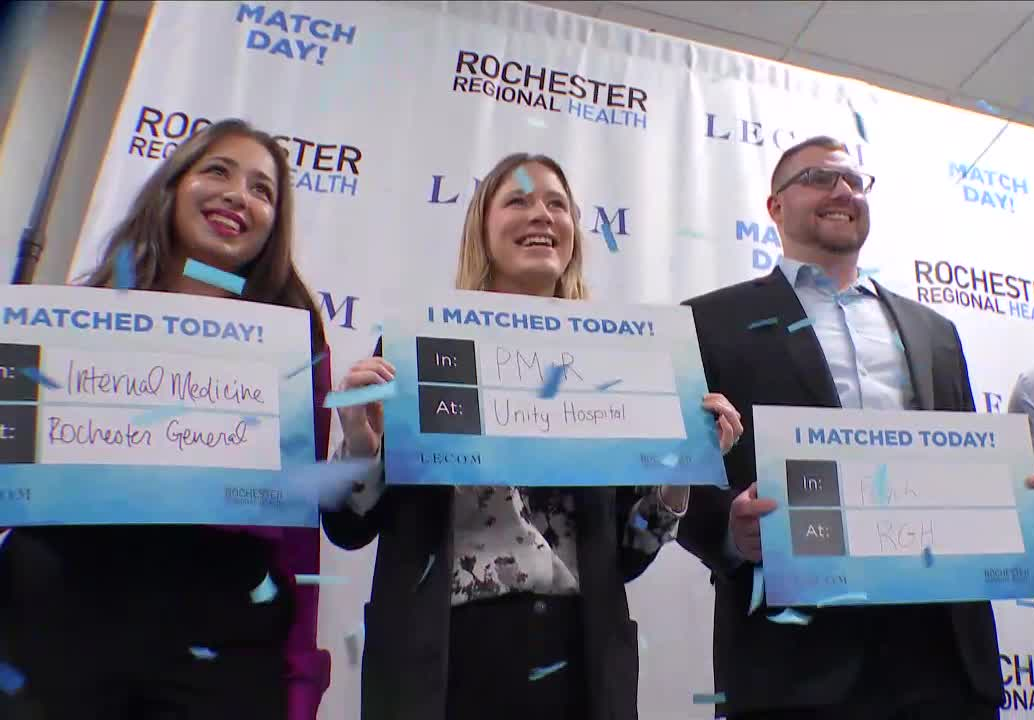Dozens of aspiring doctors match in Rochester
Dozens of aspiring doctors matched to Rochester institutions
ROCHESTER, N.Y. — Aspiring doctors learned where they will train as residents during the annual Match Day ceremony on Friday. Medical students from across the country opened envelopes and emails with the name of the institution they matched with inside — and a few dozen of the students who are learning to become doctors in Rochester are staying in Rochester.
Among them is Sam Wlazowicz from Webster. As a medical student at Lake Erie College of Osteopathic Medicine, he has done the last two years of his clinical rotations at Rochester General Hospital. “I think being from Rochester really helped me get to know my patients better and establish rapport with them, so, definitely a really great opportunity,” he tells News10NBC.
A great opportunity that Wlazowicz capitalized on. He matched with Rochester General Hospital and, when he graduates in May, will begin a residency in psychiatric medicine, a desperately needed specialty in our region. “My mom is a psychiatric nurse practitioner, so I was kind of exposed to it through her and then just fell in love with it during my psychiatric rotation in third year,” he says.
All of the University of Rochester Medical School students and the students who’ve been doing clinical rotations in the Rochester Regional Health System began their journey into medicine just as the COVID-19 pandemic began.
For Mayra Goreja, the pandemic never deterred her. “I think I kind of always knew; I always liked helping people and I was a teacher for a year and I was like, this isn’t it, so I found my way here,” she tells News10NBC.
Originally from Indiana, soon-to-be Dr. Goreja had never been to Rochester before medical school. “While I was doing rotations up here I just, really liked RGH,” she says. And that’s where she will stay, as a resident in internal medicine.
Nearly three dozen of the medical students matched on Friday will be staying in the Rochester region to continue their education and add numbers to a depleted healthcare workforce.
No Byline Policy
Editorial Guidelines
Corrections Policy
Source
